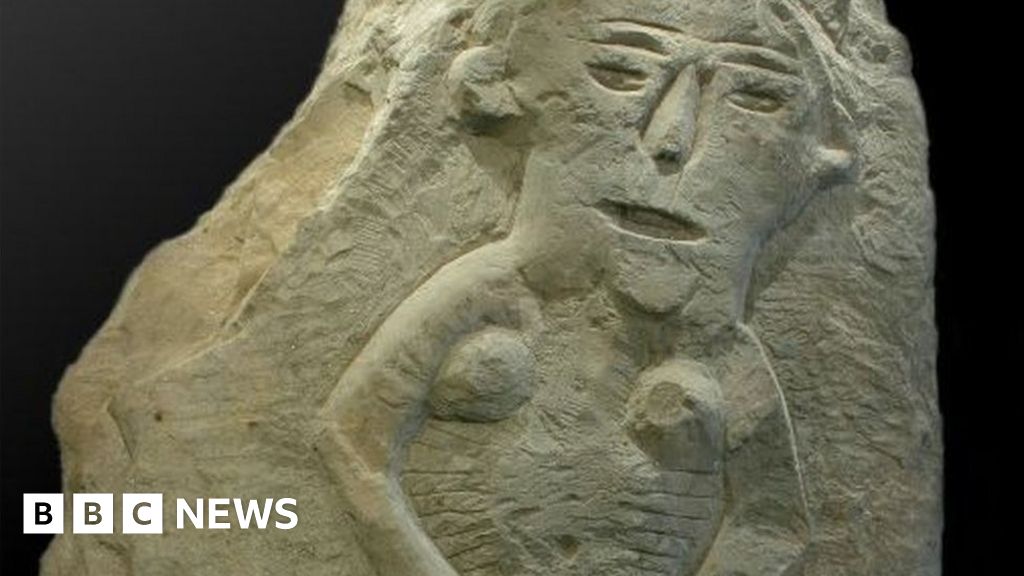
Isle of Wight continues to intrigue and bewitch visitors
The Isle of Wight is the largest (119 sq m) and second-most populous island (approximately 141,538 residents) in England, after Hampshire’s nearby Portsea Island (207,000 inhabitants), home to the maritime city of Portsmouth.
The island is an odd place in many ways, with the small towns invoking a slightly shabby, neglected England of the 1950s. People are generally insular in their habits and manners, as well as poorer, many being undernourished and consequently noticeably shorter in stature than those on the mainland.

Modern day Isle of Wight
A fair proportion of Isle of Wight inhabitants are pensioners, hoping to stretch their meagre incomes further in a slightly sunnier clime, where also house prices are generally lower.


That being said, there are some nice stretches of rolling chalk hills, sandy beaches and places of interest to visit.

Such as picturesque Carisbrooke Castle, where Charles I was imprisoned for fourteen months before his execution in 1649. Evidence suggests Iron Age, Roman and Anglo-Saxon occupation as a fortified stronghold (with graves) before the Norman Conquest.

But not so much Queen Victoria’s fussy Italianate Osborne House (designed in part by her husband Prince Albert), which her son Edward VII disliked so much (memories of being bossed around by his parents there perhaps) he gave it to the Nation.

Wight has a fascinating history, being settled in the Stone, Bronze and Iron Ages and conquered by Vespasian when the island was known as Vectis and became a popular spot to build villas.

Isle of Wight Dark Ages
But our main interest is in the Isle of Wight during the Dark Ages, after the Roman withdrawal from Britain in 410 AD.
From around AD 449, the next two centuries saw bands of Germanic-speaking peoples from Northern Europe (primarily Frisia, North-East Germany and Jutland) crossing into the English Channel and conquering/settling the region.
The island was colonised by Jutes from Denmark in 512 AD as the pagan kingdom of the ‘Wihtwara’ under joint kings Wihtgar and Stuf . In 685, it was invaded by King Cædwalla of Wessex, attempting with some success to replace the Jutes with his fellow West Saxons/Saxonised Britons. But the following year Arwald was defeated and killed, the island becoming the last part of English lands to be converted to Christianity, included in Wessex and became part of England under King Alfred the Great.
Note: Æthelberht of Kent was the first Anglo-Saxon king to accept baptism, circa 601.
King Arwald's unnamed brothers (or sons) fled to the mainland but were soon captured and forced under torture to become Christians, then swiftly executed by Cædwalla, the pair later being collectively canonised as saints and celebrated bizarrely on St Arwald's Day every 22nd April. Go figure, as they say.
Arwald's sister (also unnamed) apparently survived though became the wife of King Egbert Kent, mother of King Wihtred of Kent and grandmother of Æthelbert II of Kent. Æthelbert was the grandfather of Egbert of Wessex, who was, in turn, the paternal grandfather of King Alfred the Great.
But Arwald and the Last Pagan Kingdom of England have not been forgotten
Indeed 24 years before Cædwalla, the powerful Wulfhere of Mercia and his subservient godson, King Aethelwalh of Sussex and coerced the Islanders to convert to Christianity. But Wulfhere's departure the island returned to paganism, demonstrating their comitment to ‘The Old Gods’.
Each year a gathering happens on the evening of the first Monday after the 22nd of April at Sandown Library to commemorate the anniversary of Arwald’s death. Poetry, mime, dramatic readings and music and is often streamed live to people all around the world.
And in 2020, local Isle of Wight ‘druids’ held a ceremony at the Longstone near Brighstone on the island and transmitted as a podcast.

But has King Arwald had the last laugh?
The 2021 UK government census revealed that the Isle of Wight is no longer ‘Christian’. 47.7% of Islanders defined themselves as Christian, down from 59.3% in 2011.
61,572 said they had no religion in 2021, up from 39,960 in 2011. The number of Satanists living on the island has however more than trebled, from 5 to 18. Hardly an avalanche then. The Isle of Wight’s Jedi Knights have disappeared though, their numbers decreasing from 766 in 2011 to 0 today.
Last Pagan King of England
In 2018, Arwald was part of a major exhibition at Quay Arts in Newport for IW Hidden Heroes. Nigel George from public artists, Ecclestone George, was commissioned to create a piece to celebrate the Last Pagan King of England.

Bearing (to my mind at least), a distinct resemblance to the later nasty God ‘Rapu’ in Taika Waititi’s 2022 motion picture Thor: Love & Thunder:

Grotesquely medieval ‘Sheela na Gig’
Appropriately enough, the Isle of Wight is also home to a rare-ish pagan symbol, the definitely in-your-face ‘Sheela na Gig’, a grotesque medieval carving of a nude crone clutching open her outsized labia/vulva. Similar figures are found throughout most of Europe on cathedrals, churches, castles, and other buildings; Ireland has the greatest number of surviving Sheela na Gig carvings; 124 in Ireland, followed by 60-odd in the UK.
‘They are generally referred to as protective talismans or good luck symbols, and more recently the suggestion that they were put on the churches as 'warnings against sin and lust' has found favour. But tradition does not support this view and all references to them indicate that they were highly regarded, revered images that evidently held an exalted position within the religious iconography of the earlier church.’ From Joanne McMahon & Jack Roberts, The Sheela-na-Gigs of Ireland and Britain: The Divine Hag of the Christian Celts – An Illustrated Guide (2000).
Georgia Rhoades, author of Decoding the Sheela-na-gig, the "nude and bald" women represent “pagan goddess figures, emblematic of the Earth Goddess who births us and takes us back into her at death."
Project Sheela is a street art project founded by two Irish artists to celebrate, commemorate and commiserate with the history of women's rights in Ireland. Project Sheela places handmade ceramic sheela na gigs at new locations each year for International Women’s Day in Ireland and a limited number of special international locations.
Origins of ‘Sheela na Gig’
But where does the name ‘Sheela na Gig’ come from? there is no evidence that the term was ever a popular name for the figures when they were carved It began during the mid-19th century "where understanding of the characteristics of a ‘sheela’ were vague and people were wary of its apparent rudeness." (Jorgen Andersen, The Witch on the Wall, 1977)
Theories include:
1. An Irish term for a hag or old woman
2. Another Irish phrase, originally either Sighle na gCíoch, meaning "the old hag of the breasts", or alternatively Síle ina Giob, meaning "Sheila on her hunkers".
3. An 18th-century dance called the ‘Sheela na gig’
4. The Royal Navy ship HMS Shelanagig (1780), apparently referring to an "Irish female sprite"
5. Northern English slang word for a woman's genitals.
The oldest recorded name for one of the figures is "The Idol* or locally “The Saxon Idol”, which relates to the aforementioned figure at Holy Cross Church in Binstead on the Isle of Wight.
* R. Worsley in his The History of the Isle of Wight (1781) and noted also by J. Albin in A New, Correct, and Much-improved History of the Isle of Wight (1795)

Nicholas Dingley, known as Razzle, the drummer of Hanoi Rocks is buried in churchyard at Binstead.

And this in the Isle of Wight’s Sandown - surely no relation to ‘Dagon’ of HP Lovecraft’s Cthulhu Mythos?


Sheela na Gig by PJ Harvey

Stephen Arnell’s novel, THE GREAT ONE:

Ar: Honour / Glory
Wald: Power / Strength
Arwald: Power & Honour
Arnell: Power of an Eagle




No comments:
Post a Comment